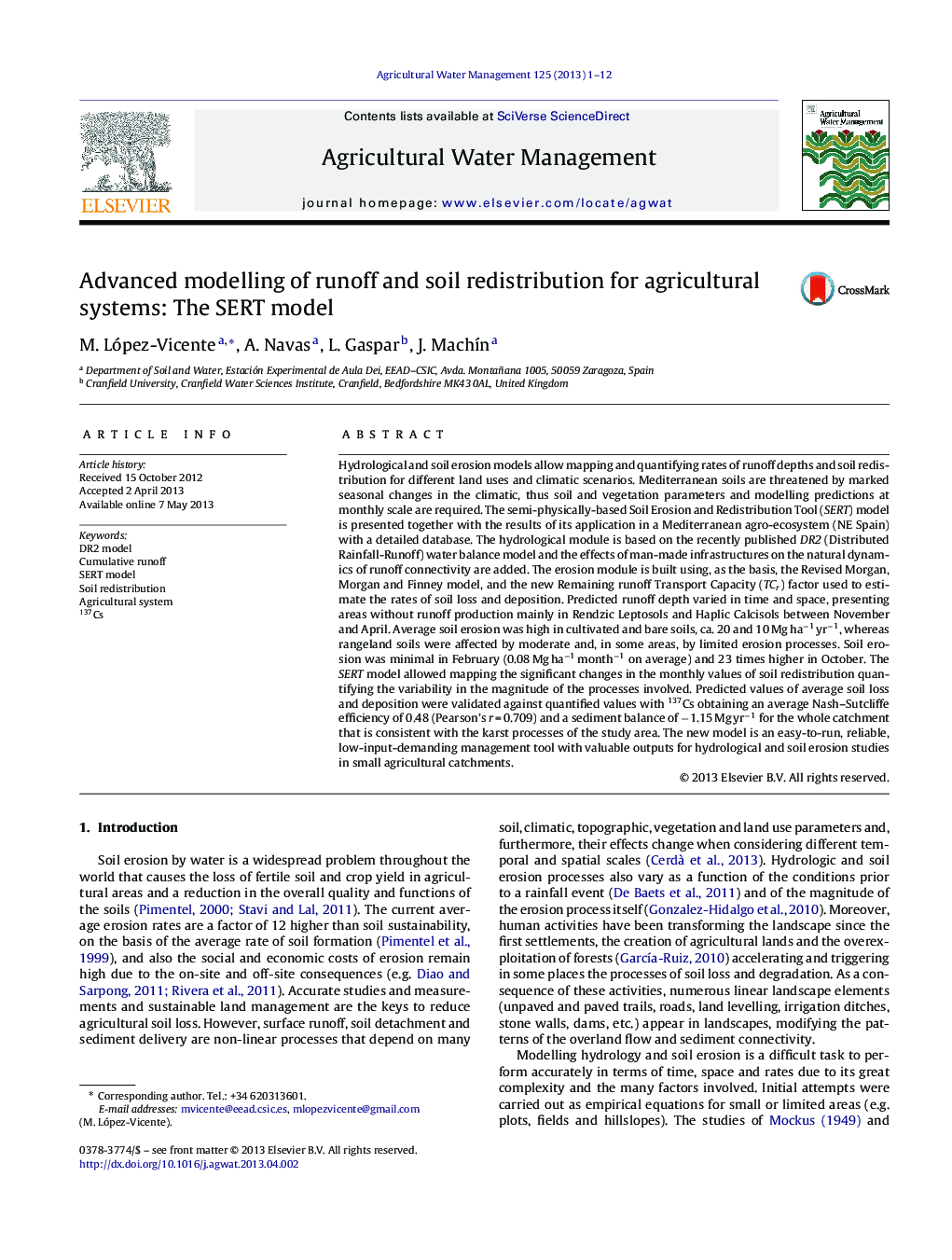| کد مقاله | کد نشریه | سال انتشار | مقاله انگلیسی | نسخه تمام متن |
|---|---|---|---|---|
| 4478862 | 1622954 | 2013 | 12 صفحه PDF | دانلود رایگان |

• The SERT model assesses rates and balances of soil erosion in agricultural lands.
• The new SERT model divides the simulation procedure into four modules.
• Runoff depth varied in time and space, presenting areas without runoff production.
• Soil erosion was minimum in February and 23 times higher in October.
• Predictions validated with 137Cs got a good Nash–Sutcliffe efficiency coefficient.
Hydrological and soil erosion models allow mapping and quantifying rates of runoff depths and soil redistribution for different land uses and climatic scenarios. Mediterranean soils are threatened by marked seasonal changes in the climatic, thus soil and vegetation parameters and modelling predictions at monthly scale are required. The semi-physically-based Soil Erosion and Redistribution Tool (SERT) model is presented together with the results of its application in a Mediterranean agro-ecosystem (NE Spain) with a detailed database. The hydrological module is based on the recently published DR2 (Distributed Rainfall-Runoff) water balance model and the effects of man-made infrastructures on the natural dynamics of runoff connectivity are added. The erosion module is built using, as the basis, the Revised Morgan, Morgan and Finney model, and the new Remaining runoff Transport Capacity (TCr) factor used to estimate the rates of soil loss and deposition. Predicted runoff depth varied in time and space, presenting areas without runoff production mainly in Rendzic Leptosols and Haplic Calcisols between November and April. Average soil erosion was high in cultivated and bare soils, ca. 20 and 10 Mg ha−1 yr−1, whereas rangeland soils were affected by moderate and, in some areas, by limited erosion processes. Soil erosion was minimal in February (0.08 Mg ha−1 month−1 on average) and 23 times higher in October. The SERT model allowed mapping the significant changes in the monthly values of soil redistribution quantifying the variability in the magnitude of the processes involved. Predicted values of average soil loss and deposition were validated against quantified values with 137Cs obtaining an average Nash–Sutcliffe efficiency of 0.48 (Pearson's r = 0.709) and a sediment balance of −1.15 Mg yr−1 for the whole catchment that is consistent with the karst processes of the study area. The new model is an easy-to-run, reliable, low-input-demanding management tool with valuable outputs for hydrological and soil erosion studies in small agricultural catchments.
Journal: Agricultural Water Management - Volume 125, July 2013, Pages 1–12